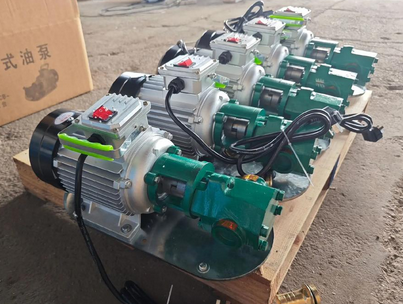Analysis of the Self-priming Capacity of Gear Pumps
The self-priming ability of a gear pump refers to its ability to suck liquid from a low position and start working normally without external liquid guidance. The following is a detailed analysis of the self-priming ability of a gear pump:
1. The existence and limitations of self-priming ability
Gear pumps do have a certain self-priming ability, which enables them to autonomously suck liquid and start working in certain occasions. However, this self-priming ability is not without limitations. It is affected by many factors, such as the design and construction of the pump, the properties of the liquid, the liquid level, and the rotation direction of the pump.
2. Factors affecting self-priming ability
Pump design and construction:
The design parameters of the gear pump, the shape and size of the gear, the structure of the pump cavity, etc. will affect its self-priming performance.
The size of the gap between the top and bottom of the gear teeth. The larger the gap, the smaller the self-priming ability.
The size of the gap between the thrust plate on both sides of the gear and the end face of the gear also directly affects the self-priming ability.
The thickness of the gasket between the front and rear pump covers also affects the self-priming ability.
The properties of the liquid:
The properties of the liquid such as viscosity, density, and gas content will affect the self-priming ability of the pump.
High-viscosity liquids and liquids with high gas solubility may reduce self-priming performance.
Liquid level:
The self-priming ability of the gear pump is related to the height of the liquid at the pump inlet. The lower the liquid level, the stronger the self-priming ability.
Pump rotation direction:
The self-priming ability of the gear pump is also affected by the rotation direction of the pump. Generally, the self-priming ability of the gear pump is stronger when rotating in the forward direction and worse when rotating in the reverse direction.
III. Precautions during self-priming
Dry grinding problem:
During the self-priming process, if there is no liquid in the pump, dry grinding will occur. This dry grinding is generally only allowed to exist for a very short time (such as within 15 seconds), otherwise it may damage the pump body.
Pipeline design:
During the self-priming process, the pump needs to clean the air in the inlet pipeline to bring the material up. Therefore, this section of the pipeline should be as short as possible, and the size of the pipeline should not be larger than the inlet diameter of the pump. At the same time, it is recommended to install the bottom valve and fill the pump when the pump is turned on for the first time.
Sealing performance:
The sealing performance of the gear pump is crucial to the self-priming ability. If there is air leakage in the sealing part or the inlet pipeline, it will seriously affect the self-priming ability of the pump.
4. Methods to improve self-priming ability
Increase liquid temperature:
Lowering the viscosity of the liquid can improve the self-priming performance. Therefore, the viscosity of the liquid can be reduced by increasing its temperature.
Reduce cavitation and foam:
By designing a suitable air intake device, reducing the gas content and foam in the liquid, it helps to improve the self-priming performance.
Optimize pump design:
Reasonably optimizing the design parameters of the gear pump, such as gear shape, cavity structure, etc., can improve its self-priming performance.
Increase the diameter of the liquid inlet:
Reducing the resistance to liquid flow helps to improve the self-priming performance. Therefore, this goal can be achieved by increasing the diameter of the liquid inlet.





